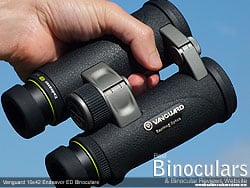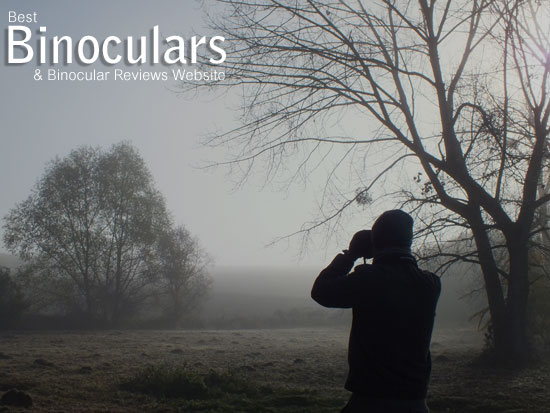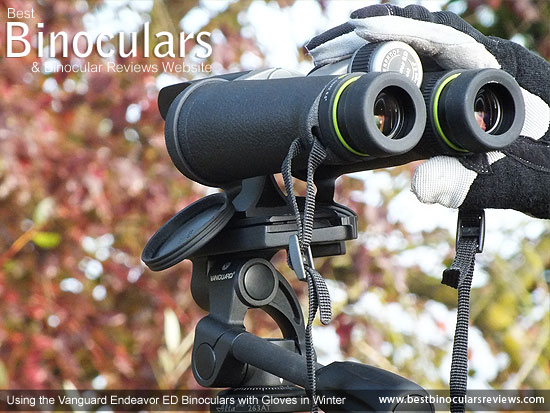Selecting & Using Binoculars in Winter
In order to catch a few early birds, I was up and out of the house before the sun had risen this morning. However today was also one of the first really bitterly cold mornings that we have had here this year and so not only did I have to dress accordingly, but I selected my binoculars with winter in mind:
Gloves
When it is really cold you will be wearing gloves and whilst the thickness of them will largely depend on exactly how cold it is, my advice is to try and select the thinnest ones you can get away with. Also look for ones that have a non slip texture that will make your grasp on the binoculars just that bit more secure.
I actually use a pair of gloves that are designed for cycling in winter and have a soft, but textured leather underside, which not only helps with the grip on my handlebars, but work perfectly with my binoculars as well.
Size
More often than not, my “winter binoculars” tend to be full size bins (objective lenses around 42mm) as they are far easier to carry (in your hands) and use when wearing gloves than something like a full compact or even mid size binocular.
Body Design
 |
| Open Bridge Design on the Vanguard Endeavor ED 10x42 Binoculars |
Look out for binoculars that have a non-slip, almost sticky or tacky rubber covering this will go a long way in preventing them from slipping from your grasp.
An open bridge or thin single thin bridge design (sometimes referred to as a True Open Hinge design) also really helps as they leave more of the barrels exposed and are thus just that bit easier and more secure to hold onto with gloves.
Focusing Wheel
Choose a binocular that has a large focus wheel that protrudes a long way out from the top of body of the binocular, this will make finding and using it with gloves far simpler.
Also make sure that the focusing wheel has a non slip texture or surface which will improve the contact you have with it. This may sound a little trivial, but if you get all these little bits wrong and use really thick gloves as well, it can make adjusting the focus tedious and a far less precise process, which could wind up with you missing that “once in a lifetime sighting”.
The image above is of me demonstrating using the Vanguard Endeavor ED 10x42 Binoculars using gloves and is the pair I chose to take with me this morning because they are an example of the ideal winter binocular:
They have an open bridge design with a protective but also tacky rubber Armour covering, a large focusing wheel that includes a rubber track for extra grip and which is easily accessible as it protrudes a long way out from the top of the body.
As well as these ergonomic features, the Vanguard Endeavor ED is also fully fog and waterproof which is another almost essential feature in winter:
Fogproofing
Fogging on the inside of your lenses usually occurs when you get a rapid change in temperature, just like when you move from your lovely warm house and step outside!
Or if you keep your optics in a backpack, they can get really cold and then when you take them out an expose them to sunlight, they could easily fog up.
Having moisture condense on the inside surfaces of the lenses will at best just spoil your day but could completely ruin your bins, so make sure you get a pair that is completely airtight (waterproof) and has had all the air inside the system replaced with a dry gas (usually Argon or Nitrogen). These is a some debate as to which gas is best, but I think the important thing is that they have one of them. For more on this you can read my guide to Fog and Waterproof Binoculars.
Binoculars & Snow
A while back I wrote an article on Choosing Binoculars for Skiing and much of that information will be relevant to those who choose a more sedate way of getting around in the snow. However the biggest difference will be size: When skiing , you will most probably want a compact binocular, whereas walking in the snow looking for birds and larger wildlife, I would revert to using a full size bin that will make handling them much easier with thick gloves on.
The other important features to look out for bins that you use in the snow will be:
Waterproofing
No matter how careful you are and especially as you will be wearing gloves, sooner or later your bins are going to land in the snow, or at least get wet from falling snow, so it only makes sense that your binoculars are fully waterproof.
Eye-Relief
If there there is a lot of snow and it is sunny, you will most probably be using sunglasses because of the glare. It is far safer (and warmer) to continue to use these glasses in these conditions when looking through your bins as sometimes this glare can be very bright and almost like looking directly at the sun.
So to make sure that you still see the whole field of view, select binoculars that come with a good amount of eye-relief. In my experience around 16mm or more is sufficient for me when I use my glasses. For more, take a look at my guide to Long Eye Relief Binoculars.


 Article | Posted by Best Binocular Reviews
Article | Posted by Best Binocular Reviews 

 Categories:
Categories:  Tags:
Tags: 
